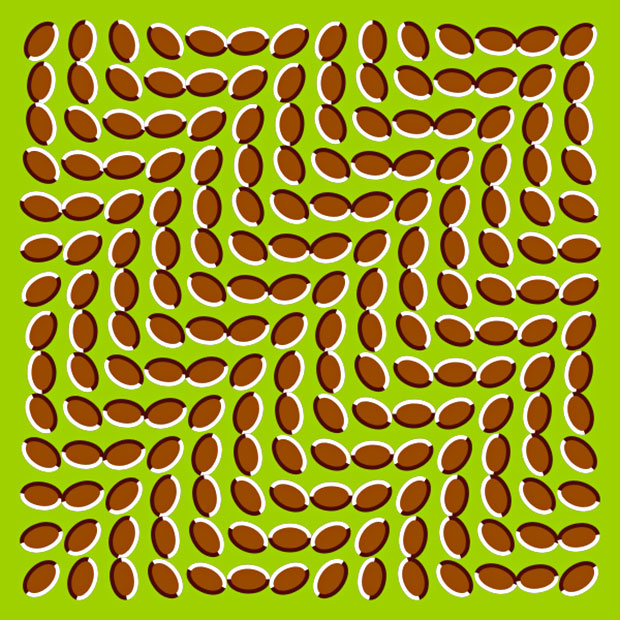How Optical Illusions Work
It’s actually quite amazing how easily our eyes and brain can be tricked! We see things that aren’t there, see completely stable things move, and are confused by how big something is (or isn’t)! And by the way… The image above is NOT animated.
An Optical Illusion Works When The Brain Takes A Shortcut
Optical illusions can be a lot of fun because they challenge perceptions. But they also teach an important lesson—eyes can be fooled!
It takes our eyes and brain about one-tenth of a second to see, transmit and process an image. Our brains use lots of tools to compile images so quickly… Noting surrounding contrast, defining borders, and even flat-out guessing (based on experience) what should be there to fill in any gaps. Usually, these shortcuts work great and serve us well! But every now and then, they fail us.
Cracking The Code For Some Common Illusions
This video outlines a few common optical illusions and explains how our eyes and brains gather visual information to create the 3D world in which we live.
[iframe http://www.youtube.com/embed/rfdJyDfIHIc?rel=0 620 349]
Your Eyes May Trick YOU, But They Don’t Trick US
What does all this have to do with your eye health? Well, we’re illustrating an important point. When it comes to protecting your precious gift of sight, things may not always be as they seem. Sometimes it’s easy to miss early signs of declining vision and eye disease. For example, one of your eyes may be compensating for the other and you don’t even realize it. It’s important to catch vision problems early so that we can help keep your eyes healthy.
Schedule Regular Checkups
Your vision is too important to risk. Regular, comprehensive eye exams are the very best way to know your eyes aren’t fooling you. If it’s time for your appointment, give us a call!
Top image by Flickr user Robson# used under Creative Commons Attribution-Sharealike 4.0 license. Image cropped and modified from original.

